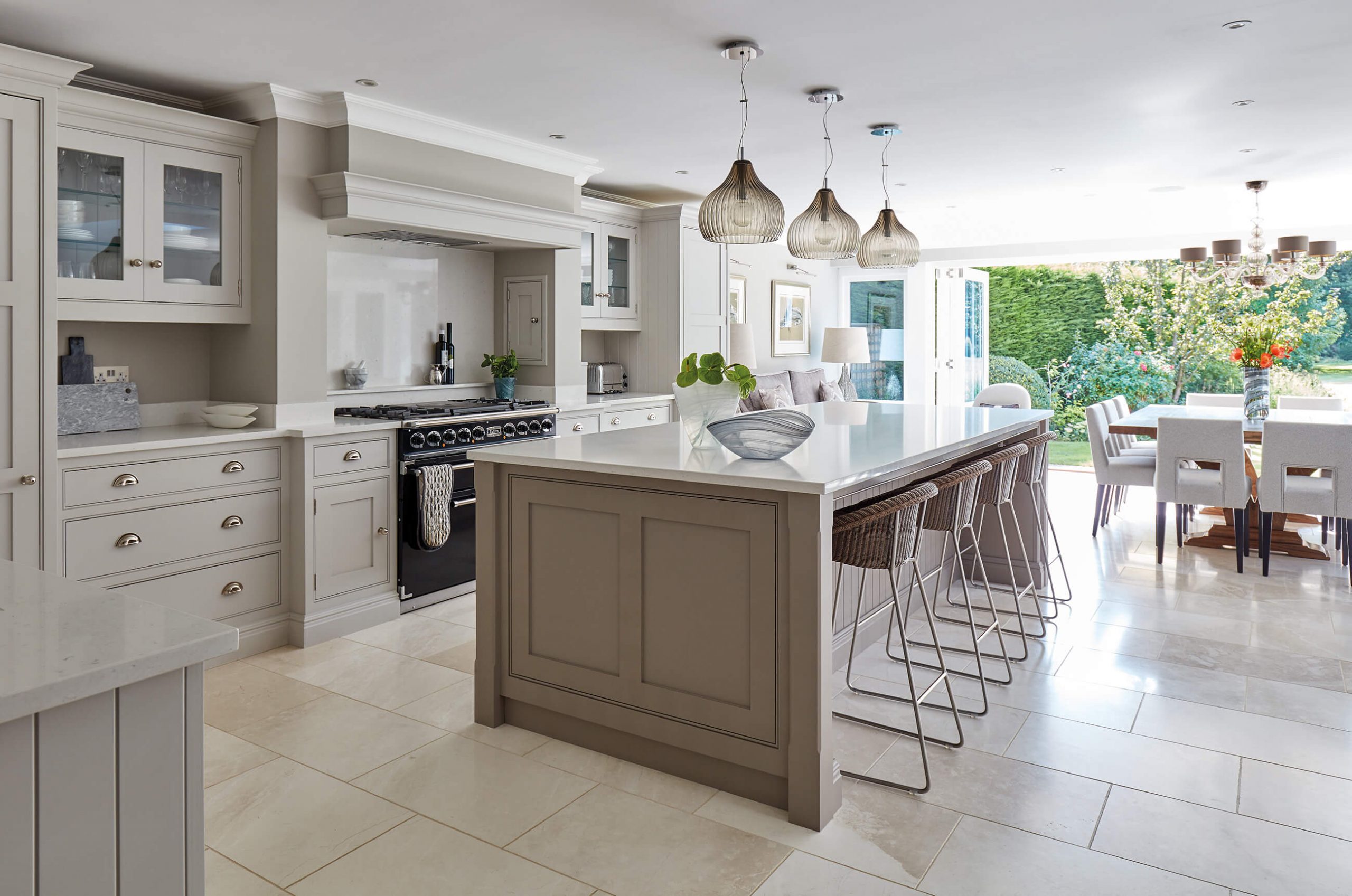

Maximising natural light in the home can have many benefits. From increasing your body’s feel-good serotonin levels and improving your positive wellbeing to reducing energy consumption and creating a selling point for potential buyers in the future.
The hub of the home deserves special consideration when it comes to lighting, as it’s a space where we spend the majority of the day cooking, eating, relaxing and entertaining. Below we’ve shared some clever design tricks that can help to increase the natural light in your kitchen
As expected, lighter colours can benefit kitchens that may lack natural light or space. Designer Suzie Francis emphasises, “You don’t have to go with clinical white. We have some beautiful neutrals which are equally as beneficial, keeping the space feeling fresh and spacious.”
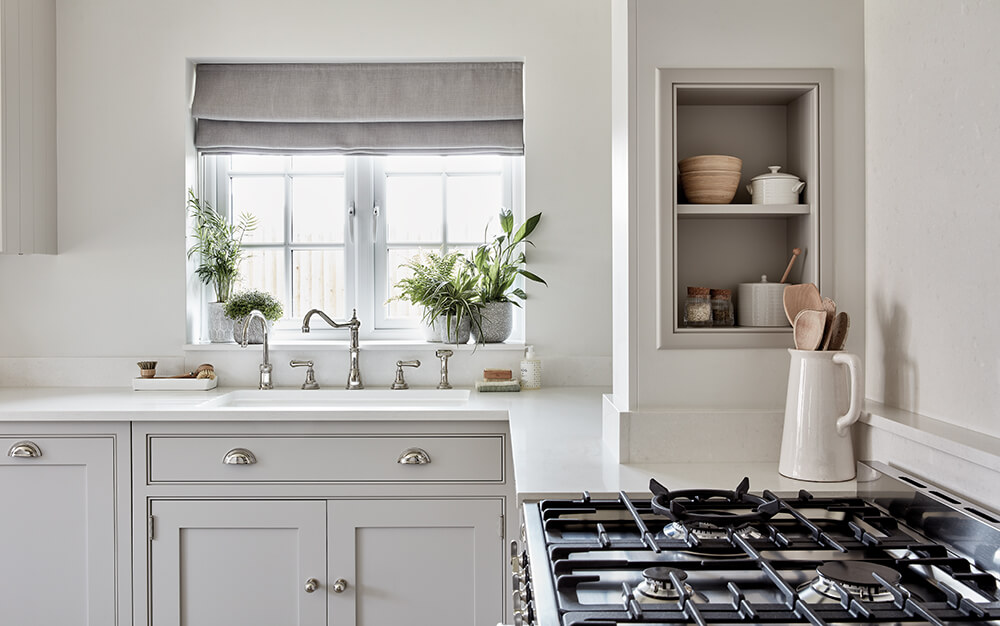
Softer neutrals work well to expand the perceived space of your kitchen. You can use a single colour throughout the area to create a lofty feel or a base when introducing an additional shade.
Design Director, Tom Howley explains, “Two of our most loved shades are Tansy and Willow, beautifully understated, they create truly stunning kitchens enhancing architectural interest, all without the need for bold colour. If you’re using lighter colours to enhance your space, then try painting your walls in the same shade. This will focus your eye on the whole area, allowing it to feel larger and lighter.”
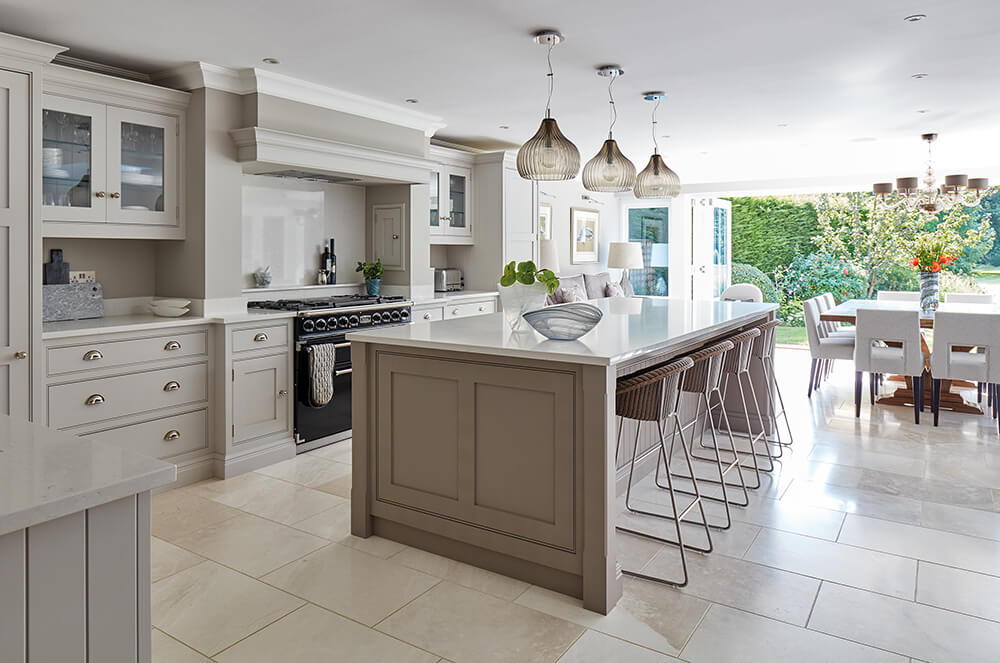
As your work surface takes up a considerable amount of space in the kitchen, it’s always a good idea to choose a light reflective material. Quartz such as Silestone or Caesarstone are more durable than most natural stones and come in a beautiful range of light-enhancing colours and finishes. With man-made quartz, you will have a more consistent appearance achieving an uninterrupted, seamless look on kitchen surfaces. This is particularly useful in smaller kitchens as it creates the illusion of space.
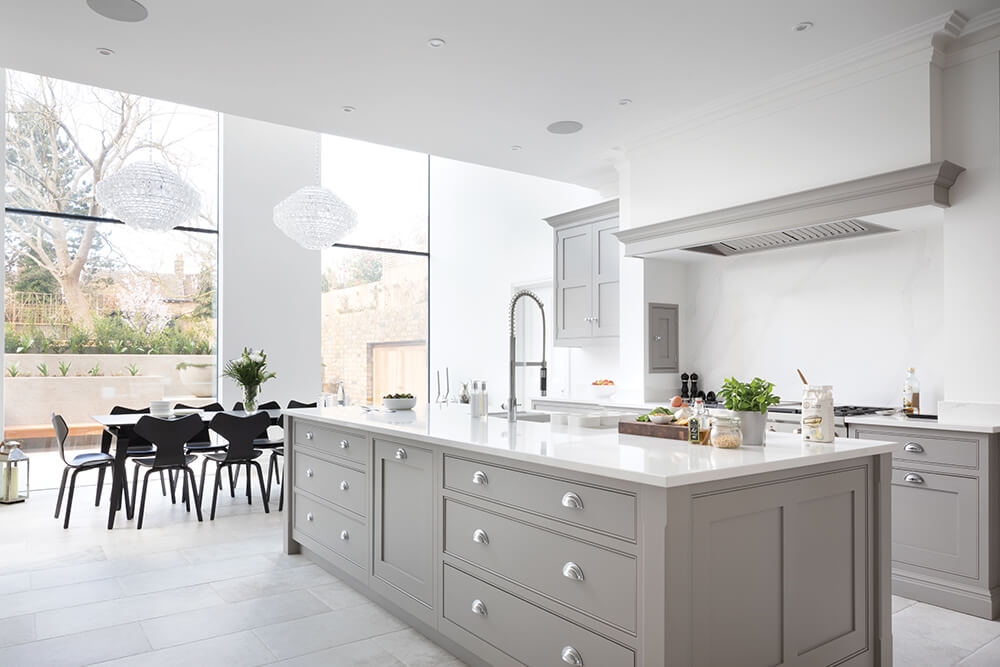
Windows and natural light are sought-after features in homes and are usually top of the list when planning an extension. An orangery will bring increased natural light into any home, especially some period properties which often suffer from low light levels.
Our friends at David Salisbury are experts in ensuring a harmonious connection between your home and garden. Considering how much light you would like to add in will help to dictate whether you opt for an orangery with a roof lantern or a garden room with a solid roof. You can also enhance the connection with your garden with the addition of bi-fold doors, which can fully retract and provide a seamless link to the outside. Tom Howley designers will keep this in mind by creating a link between indoors and out. For example, a kitchen island with considered sink placement or seating can provide lovely garden views all year round. We will also remember those practical solutions, such as a drinks fridge by the doors for those sunny BBQs!
Mirrored splashbacks are great for maximising light flow around the room if natural light is limited. If you’d like to inject a little personality and interest into your kitchen, choose antique glass. There are so many variations of glass to choose from to suit your aesthetic, adding a vintage look whilst still creating an open, airy feel.
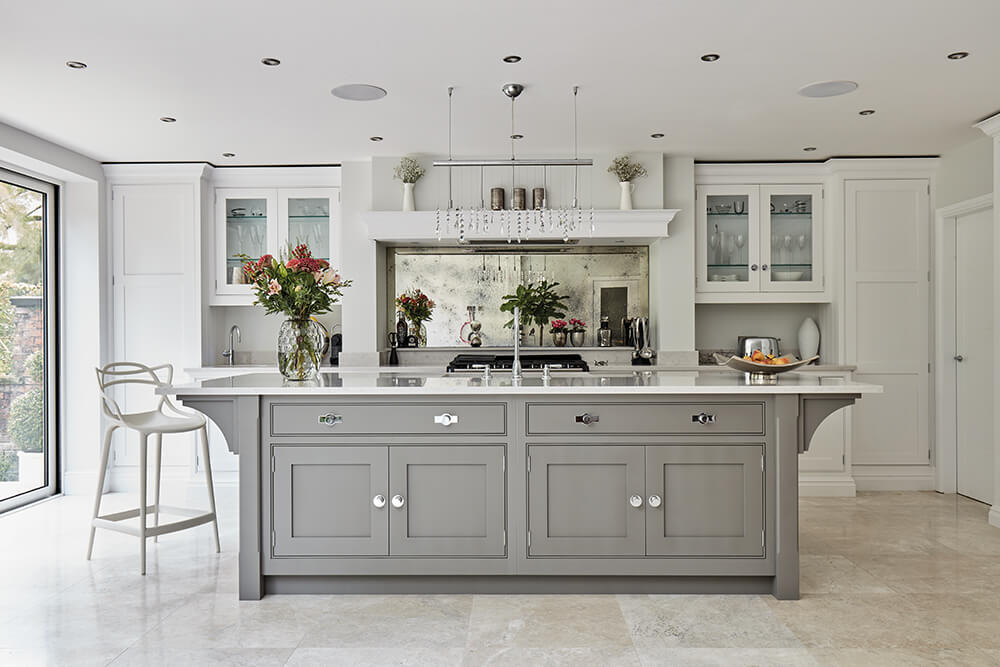
Glass is an excellent finish for kitchens. Not only do glazed cabinets break up the monotony of repetitive, solid fronted doors – especially in large spaces – they maximise the flow of light into darker corners. Having glass-fronted doors is as good as open shelving when it comes to displaying your prized pieces. They’re also fantastic when accessing everyday essentials allowing you to see what you have and where you’ve put things.
“Islands take up a large amount of space, so having glass-fronted doors can break up the block. Glass inserts create an illusion of depth and increase the perception of square footage, which is a bonus in smaller kitchens. A traditional Shaker style kitchen would always have a dresser for crockery and copperware, so glazing in an island that’s inspired by Shaker-style design recreates the look in a contemporary way,” adds Design Director, Tom Howley.
We understand that the finish of your flooring will be influenced by your home’s architectural style, interior design and personal taste. As well as looking the part, you need to think about durability in high traffic areas.
A non-porous porcelain tile is a fantastic option in the kitchen, withstanding regular staining, muddy feet, water spills and temperature fluctuations. Stick to light reflecting colours to accentuate natural light in the room. This doesn’t mean you have to opt for bright white. Choose soft beige, cream tones or tiles with a slight neutral vein skimming through them, giving the floor interest.
You don’t need a sprawling garden, designated growing space or greenhouse to gain the benefits of plants. It’s so easy to incorporate an indoor plant into your home décor. They introduce life into your home by adding a pop of colour and improving air quality, impacting our behaviour and wellbeing as a result.
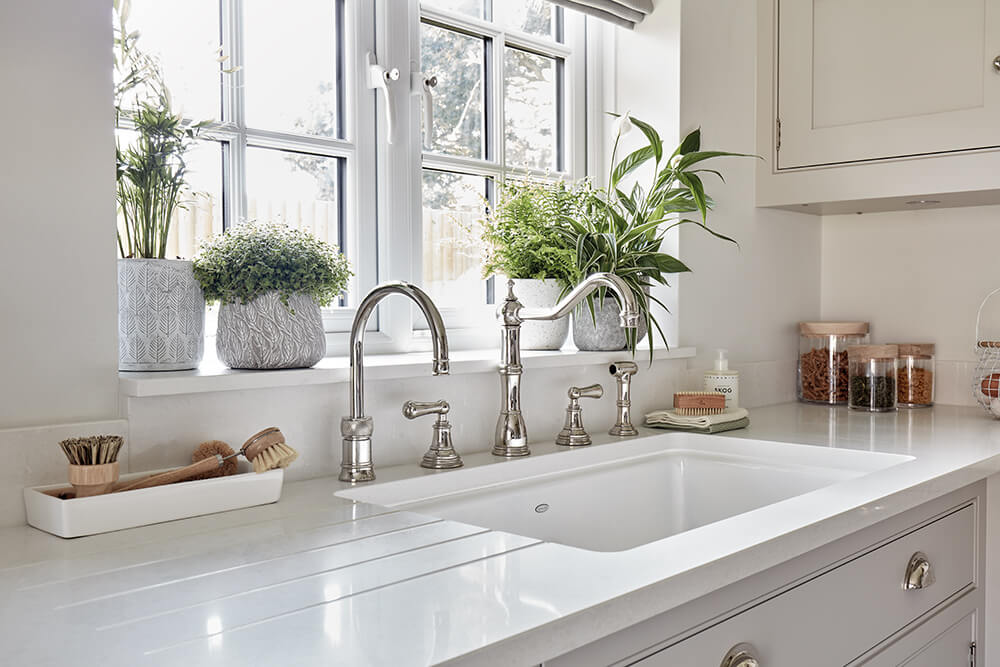
Plants in your garden can also affect your mood and impact the light levels inside your home. Think about tree heights and shrubs that may be blocking sunlight growing around or near your windows and doors, and cut these back regularly to let light flow.
Layering lighting is a fantastic way to ensure you have adequate illumination at any time of day. The three main types of lighting are ambient, task and accent. Task lighting such as under cupboard LEDs and strategically placed pendants work exceptionally well together in kitchens.
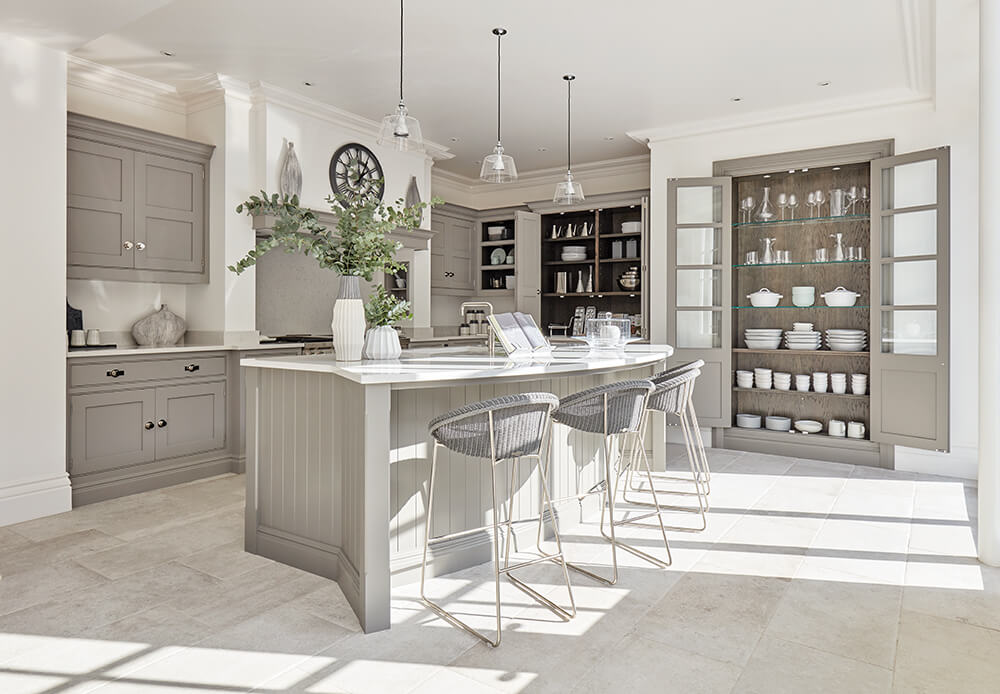
Design Director, Tom Howley adds ,”Pendant lighting looks stunning over an island and sets of three work well together and ensure that the full length of the unit can be illuminated. They should hang 12-20 inches below an 8ft ceiling as a general rule. For each additional foot of ceiling height, we recommend adding 3 inches. You don’t want pendant lighting to hang too low. Ensure adequate clearance above taps or for clearance purposes if your client is going to be using the island for dining. It’s also important if pendant lighting is to be used as task lighting to make sure it’s at a workable height so that the homeowner can use the space efficiently without banging into it.”
Remember, when planning pendant lighting, it’s important to enhance the natural light you already have flowing into the space rather than taking it over with artificial brightness.
Our designers are here to help bring your kitchen design ideas to life. Find your nearest showroom here or book your free design visit today.